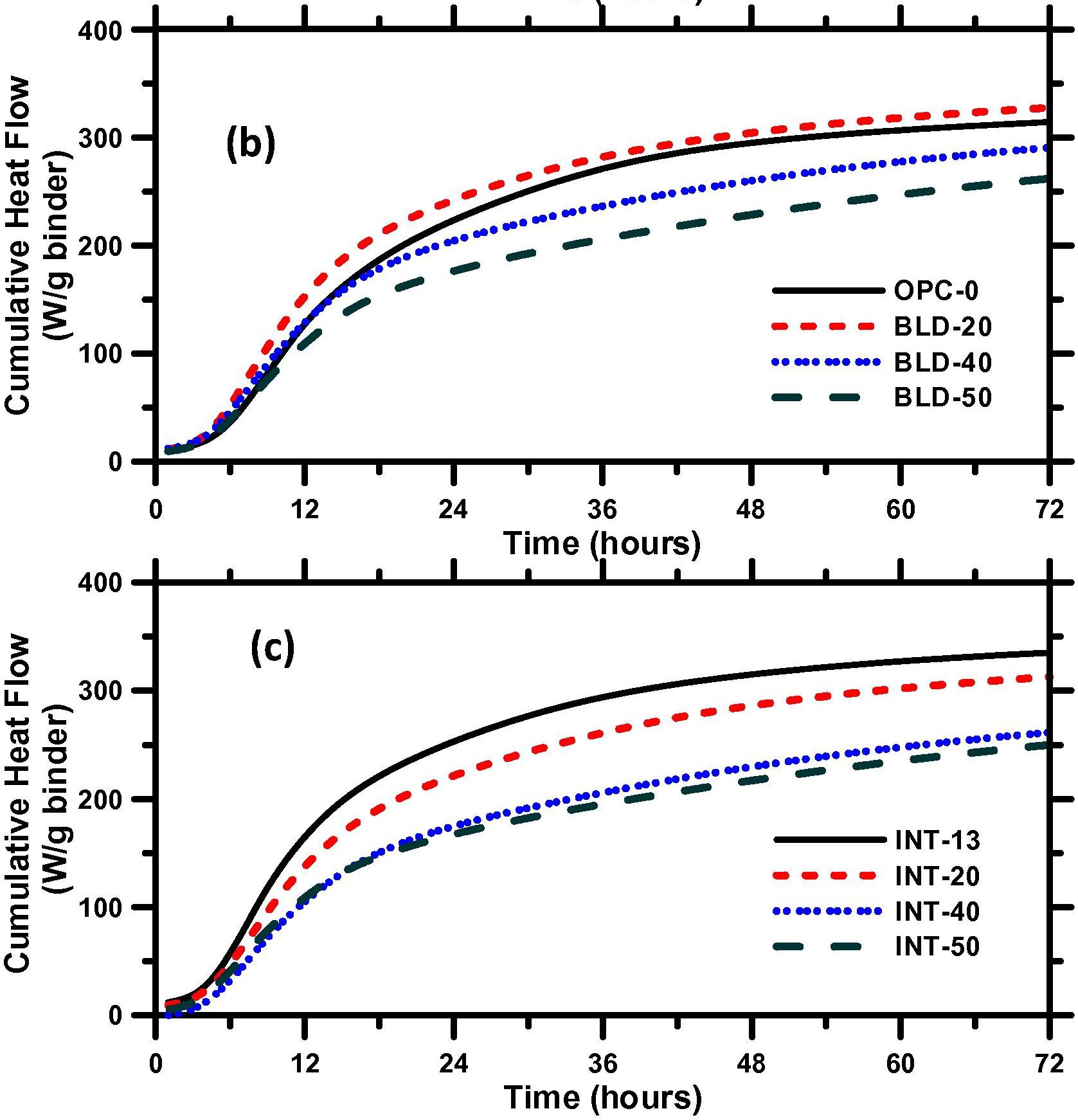Citation
Arora, A.; Sant, G.; Neithalath, N. Construction and Building Materials 2016, 102, 113-124.
Arora, A.; Sant, G.; Neithalath, N. Construction and Building Materials 2016, 102, 113-124.
The influence of high volume cement replacement using a combination of slag and limestone, on the hydration, reaction products and pore structure, and strength of cementitious systems is reported in this paper. Total replacement levels vary from 20% to 50% by volume. Slag is blended with: (i) Portland-limestone cement (PLC) that contains limestone interground with cement, or (ii) OPC and limestone of four different sizes in such a way that the resulting particle size distribution of the composite matches that of the corresponding PLC-based mixture. The hydration response of cement and cement–slag mixtures are found to be modified in the presence of limestone. It is observed from calorimetric and thermogravimetric analysis that a favorable slag–limestone synergy exists, that enables high volume replacement of cement without concomitant loss in properties. The early-age compressive strengths are beneficially impacted by the presence of limestone whereas the clinker factor does not play a significant role in later-age strengths in both the blended and interground systems. The study paves the way for development of multiple-material binders containing higher levels of cement replacement that demonstrate early and later age properties that are comparable to or better than that of traditional straight cement systems.
